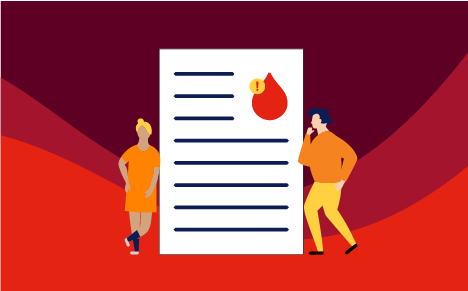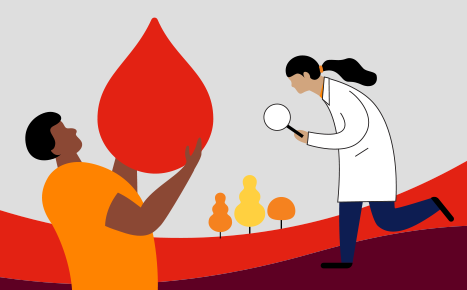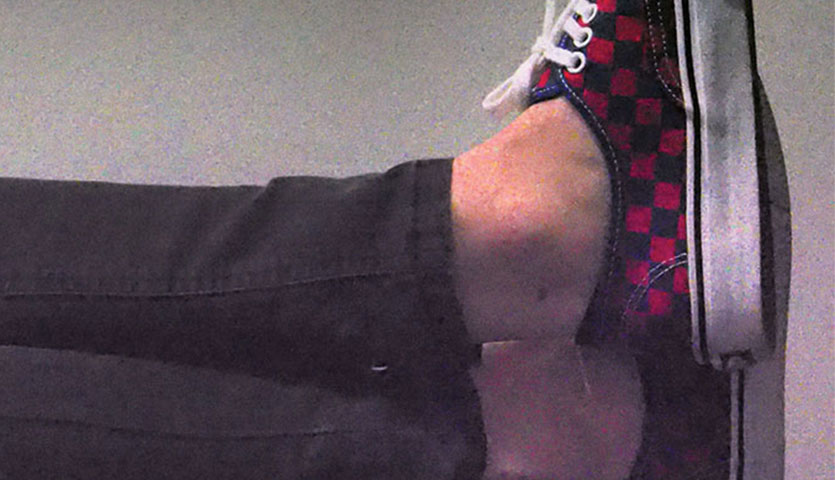Trending research
Keep up to date with research insights, studies and the latest projects from Lifeblood.
How we're beating the weather to supply safe blood all around Australia, 24 hours a day, 365 days a year.
17 April 2025
Did you know that donating blood is a win for both employees and their employer? Our donor research team looked at why 300 people do or don’t donate blood as part of their workday in a national survey spanning four organisations. Here’s what we found.
We’re making the most of the samples and data that you’ve generously given for research, which will lead to more discoveries and better health for donors and all Australians.
06 March 2025
Your blood samples go on a surprisingly complex journey to be part of our biobank.
06 March 2025
March 2025 update from the Australian Blood Donor Study
06 March 2025
They’re all key to growing blood in the lab! It’s a futuristic concept with amazing potential to save lives. Australian Red Cross Lifeblood researchers are harnessing the latest technology to explore the world of blood grown outside of the body.
Hurstville, New South Wales (NSW) is home to our newest blood donor centre. But why have we chosen to open our doors there? Learn more about how we choose the perfect spots and the role diversity plays in helping find the best blood match for more Aussies.
07 February 2025
Haemochromatosis is the most common genetic condition in Australia. The condition causes the body to store dangerously high levels of iron.
Behind the scenes with the team.
23 August 2024
Dr Alexis Perros is a research fellow, and she's using genomic techniques and samples from the ABDS biobank to help answer questions about blood group systems and iron storage.
23 August 2024
Find out what we’ve found (so far) and what happens next.
23 August 2024
In August 2023 we started giving donors a letter to take to their doctor if their haemoglobin (Hb) levels were low.
03 July 2024
Did you know that blood types go beyond A, B, and O? In fact, there are over 350 different blood types, and some of those are more common in people with particular ethnic ancestry.
12 June 2024
I couldn’t provide a sample when I was at a donor centre and now I can’t donate, can I still be part of the study?Yes. The blood samples are just one part of the study.
21 February 2024
Take home message
31 January 2024
Learn more about the different projects that will depend on your survey responses and blood samples.
24 January 2024
Behind the scenes with Dr Surendra Karki, a Lifeblood Research Fellow
24 January 2024
Find out what we’ve found (so far) and what happens next.
24 January 2024
Climate change has emerged as one of the greatest challenges of our time.
11 August 2023
People with Hereditary haemochromatosis (HHC) who donate at Lifeblood reported that they feel more like donors than patients. This suggests that Lifeblood could change the way we communicate with them, as we currently communicate with them as “patients”. They did not know much about plasma and had mixed views on being able to donate plasma.
04 July 2023
One of the easiest ways to help meet demand is to encourage those who already donate to give blood more often. But what would it take to encourage regular blood donation?
Why don’t we pay donors?
28 November 2022
What does it mean to find out you’re rare? Lifeblood researchers set out to explore the experience of donors learning of their rare blood type: what it means for them, their donation behaviour and perspectives on the communications received.
07 November 2022
Lifeblood researchers, with the help of a small number of very dedicated donors, were able to contribute to some amazing work on novel COVID-19 therapies being conducted by Associate Professor Emily Blyth and her team in the Westmead T-Cell Therapies Group (WTCG) at the Westmead Institute for Medical Research.
09 September 2022
A short history of vCJD, or “mad cow” disease: what causes it, how does it affect people and why is it so hard to detect?
25 July 2022
Understand why it’s now safe for UK donors to donate, after years of restrictions.
Blood donors are overachievers. Not only are you giving to change lives, but your donation can also contribute to world-leading research, like helping track the progress of a pandemic.
13 July 2022
What was the question?
We know relatively little about how donors and non-donors think about the testing of blood for genomic markers.
02 May 2022
A landmark study of 1.3 million Australian patients and nearly half a million blood donors has found the nation’s blood types have become more “positive”, citing an increase in ethnic diversity as
21 March 2022
Have you ever wondered if we could grow blood outside the body? It’s an exciting prospect, with incredible potential.
Are you seen as bragging or simply generous when you wear a branded bandage after donating blood? It’s one question that Dr. Michael Lam in conjunction with Dr. Barnaby Dixon and Prof. Masser from Lifeblood’s Research and Development Donor Research Team asked when looking at how we can encourage more men to donate blood.
11 October 2021
If you’re a regular blood donor, you’ll be familiar with the “finger prick” test at each donation.
20 July 2021
What was the question?
We need to make sure that donors are happy to help with a large, long-term study before we can begin one.
During active combat, the prompt and safe supply of blood products can save the lives of our Australian Defence Force (ADF) personnel.
Our O negative donors are being asked to give more frequently than anyone else.
Sometimes it takes a rare occurrence for us to understand the commonplace.
Your blood type is more complicated than you think. There are hundreds of possible variations apart from the commonly known ABO and Rhesus blood groups.
Platelets are routinely stored with agitation at room temperature for 5 days, when they’re discarded if they haven’t been transfused.
Donors are the lifeblood of our organisation.
We collect around 31,000 donations every week to meet the constant demand for life-saving products, and our
What was the question?
CoolSense® is a non-invasive device that is used to numb the skin before needle insertion.
During its 120-day lifetime, a red blood cell completes around 170,000 circuits of your body. That’s about 500 km.
Based on this discovery he developed a treatment for diphtheria based on immune serum from horse blood.
13 July 2020
Donating blood is one way in which people help in disaster situations.
06 May 2020
As a blood donor, you probably already know your blood type as some combination of A, B, O and then a positive or negative.
20 January 2020
Just like our background determines the way we look, where we come from is one of the major factors that influences the make up o
09 August 2019
What was the question?
We wanted to understand how our plasma donors decide how often they donate.
20 December 2018
I am interested in how platelets, the smallest blood cells, function.
24 May 2018
Researchers from the Australian Red Cross Lifeblood are collaborating with the Westmead Institute for Medical Research to trial a revolutionary treatment for people whose cancers have returned and
17 May 2018
What’s your type?
30 March 2018
It’s a question we face, every time we meet someone new: ”Blood donor research? What’s that?”.
12 January 2018
This article is republished from The Conversation under a Creative Commons license.
12 January 2018
This article is republished from The Conversation under a Creative Commons license.
12 January 2018
This article is republished from The Conversation under a Creative Commons license.
12 January 2018
What was the question?
Some donors react to the sight of blood or a needle by feeling dizzy, faint or nauseous.
10 November 2017
What was the question?
Some donors react to the sight of blood or a needle by feeling dizzy, becoming sweaty or feeling nauseous.
22 February 2017
You're viewing 56 of 58 articles
You may also like

Our research
World-leading research guides everything we do. See our program, strategy, and meet our researchers.
View our research
About
Know why we give life through breast milk, blood, plasma and more, for world-leading health outcomes.
Find out about us
Microbiome
Find out how Lifeblood is providing life-changing faecal microbiota for transplant.
Know about microbiome











































